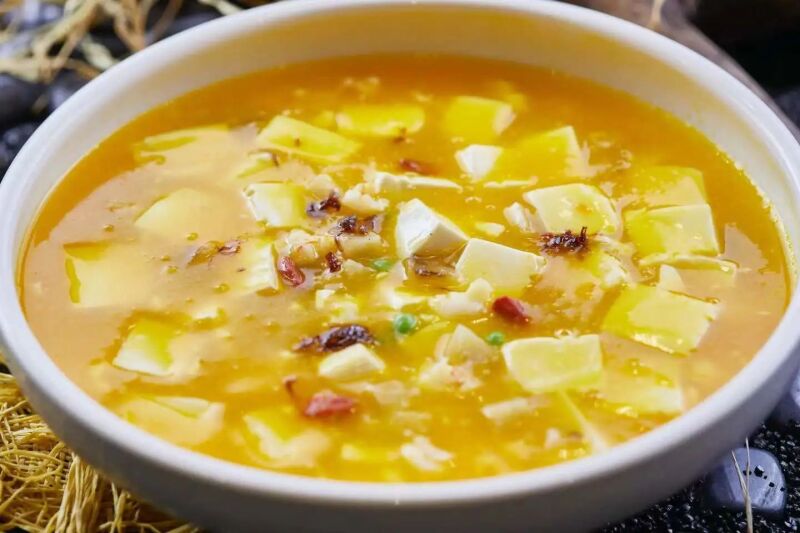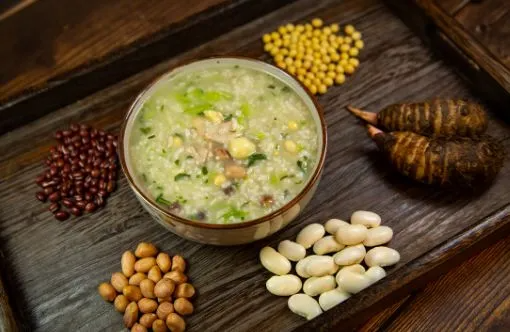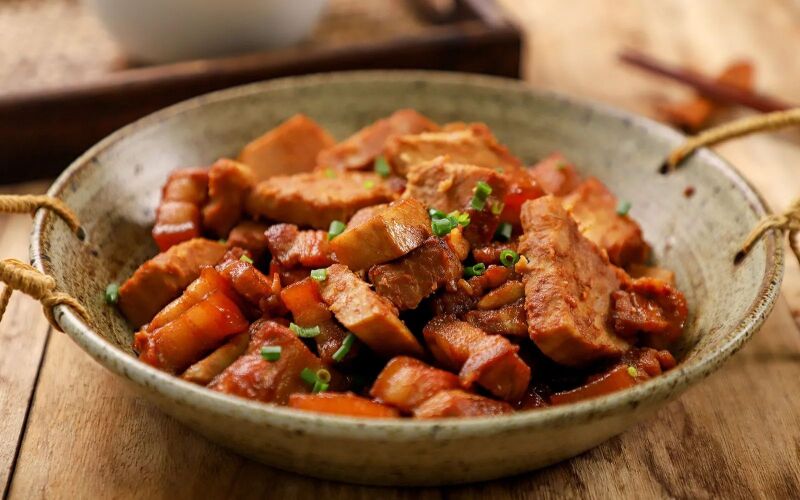Taizhou, known as the hometown of taro, boasts over 6,667 hectares of taro plantations, with some varieties now beginning to hit the market.
The dish Crab Roe Tofu includes Longxiang taro. [Photo/WeChat account: tzfabu]
Among them is the Longxiang taro, famous for its delicate texture and sweet flavor. One popular local dish, Crab Roe Tofu, pairs tender tofu and smooth Longxiang taro with green garlic shoots and rich crab roe, offering a delicious, aromatic experience.
The Xiangsha taro, high in starch and sticky in texture, is often enjoyed steamed and served with a dip of soy sauce, garlic leaves, or white sugar, providing savory and sweet options for diners.
Zihe taro is often cooked into porridge with various ingredients. [Photo/WeChat account: tzfabu]
Zihe taro, known for its smooth, snowy-white flesh, is often cooked into hearty porridge during cooler weather. Combined with ingredients like soybeans, peanuts, and salted pork ribs, this dish is nourishing and flavorful, with the taro adding a pleasant chewiness.
Xianghe taro pairs perfectly with braised pork belly. [Photo/WeChat account: tzfabu]
The Xianghe taro is expected to hit the market in late September, offering a silky smooth texture that pairs perfectly with braised pork belly. Together, the taro absorbs the richness of the pork while adding its fragrant flavor, creating a tender and flavorful combination.


